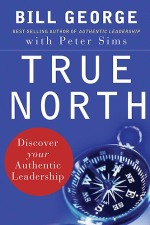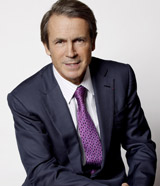 “There is no such thing as a instant leader.” begins Bill George. Think about the typical CEO of a company. What made his or her leadership style significant to the livelihood of the company, if it was successful to begin with? One quickly realizes that the definition of being a ‘leader’ is not all black and white as numerous leadership studies and archetypes make it out to be. In fact, the former CEO of Medtronic argues that the best leaders are those who do not aim to be leaders, but those who aim to embody leadership throughout the company, called ‘authentic leadership.’
“There is no such thing as a instant leader.” begins Bill George. Think about the typical CEO of a company. What made his or her leadership style significant to the livelihood of the company, if it was successful to begin with? One quickly realizes that the definition of being a ‘leader’ is not all black and white as numerous leadership studies and archetypes make it out to be. In fact, the former CEO of Medtronic argues that the best leaders are those who do not aim to be leaders, but those who aim to embody leadership throughout the company, called ‘authentic leadership.’
Key words
Leadership, management, organizational behavior, corporate culture, human resource, career development, authentic leadership.
Summary

Click to access more AMP Books.
The author, throughout the book, emphasizes the notion of embodying authentic leadership rather than of trying to be the ideal ‘leader’ for an organization. This mindset of following CEO archetypes and following what others have done in the past, Mr. George argues, is completely unrealistic. In the worlds of Ann Fudge he adds:
“Any of us can figure out ways to drive a business for two years and make a boatload of money and move on. That’s not leadership. That’s playing a game. Leadership is leaving something lasting, whether it is how you treat your people or how you deal with a problem.”
In interviews with 125 executives of major companies, Mr. George sets out to change our preconceived notions over what constitutes a ‘leader.’ These executive accounts depict the trials and errors, as well as the successes, in managing and leading a company, as well as how personal crises and failures had pushed them to lead their companies through setbacks of their own. Indeed, the author is equally as honest about his own failings in his college days and later in his career.
True North demonstrates that there is no set path or leadership model to follow whilst managing a large corporation. The book gives some excellent examples of leaders who have had moments of self doubt such as Ann Mulcahy stopping her car on her drive home from work and wondering if she could continue in her struggle to save Xerox from bankruptcy. Here it was the support of her colleagues that carried her through. Most leaders go through difficult moments and as Mr. George so aptly points out, if you think you are having a bad day, perhaps you should think about Nelson Mandela who was imprisoned and tortured for 27 years. Upon his release, Mandela fought for peace and harmony rather than for revenge.
Mr George argues that instead of working on one’s individual traits to emulate the CEO of a successful company, one should be working to motivate the people who work in the organization to carry out company goals and its vision. By focusing on working through personal trials and achievements, one ends up finding one’s ‘authentic voice,’ the building blocks towards leading a company with authentic leadership, which no other executive can copy.
George outlines five dimensions that an executive generally needs to lead with authentic leadership:
- Purpose: Without knowing the reason of why one chooses to be in his/her leadership position, there is the danger of becoming overconfident and arrogant.
- Practising solid values: One should be wary of losing any integrity in company practices or in response to pressure from others. One should always seek to maintain this key value; otherwise, one is at risk of losing others’ trust as a leader.
- Heart: This means one should put their heart into their work. This implies being passionate about what one does in the company, and in having the bravery to maintain the company morale and carry everyone through hard decisions.
- Relationships: One should embody trust and confidence within their relationships so that they are able to last, an indicator of one’s commitment to the company.
- Self-discipline: This aspect is crucial as it involves being accountable to one’s responsibilities, as well as ensuring others within the company are as well.
The central point of this book is in defining the authentic leader as one who uses personal adversity to the advantage of the company as a whole. By overcoming personal challenges and difficulties, one is able to transfer that experience into carrying out purpose, practice of core values, passion, committed relationships, and self-discipline to lead a company with vision, the epitome of authentic leadership.
Bill George on how do people become leaders
Interesting Quotes
Memories of his father’s lack of health care led Schultz to make Starbucks the first American company to provide access to health coverage for qualified employees who work as few as twenty hours per week.
Some outstanding leaders like former Merck CEO Roy Vagelos said they did not see themselves as leaders at all. Instead, they viewed themselves as people who wanted to make a difference and inspired others to join with them in pursuing common goals. If that isn’t leadership, what is?
Vanguard CEO Jack Brennan believes that the worst thing people can do is to manage their careers with a career map.
During the course of their leadership journeys many leader lose sight of their True North and get derailed. This is the risk all leaders face.
Before people take on leadership roles, they should first ask themselves two fundamental questions: “What motivates me to lead?” and “What is the purpose of my leadership?””
Mike Baker, CEO of Arthocare: “I am suspicious of somebody who’s never failed, because you don’t know how they’re going to react when they do.”
To become authentic leaders, we must discard the myth that leadership means having legions of supporters following our direction as we ascend to the pinnacles of power….This shift is the transformation form “I” to “We.””
The next time you feel sorry for yourself, think of the example of Nelson Mandela.
Many people never tap into their most powerful motivations. With society’s unprecedented attention on material gain, temptations and social pressures cause many leaders to seek the world’s acclaim rather than doing what motivates them internally. The pressure starts early when college graduates compare salaries.
Warren Bennis: “Have some group that will tell you the truth and whom you can tell the truth. If you have people like that around you, what else matters.”
To manage the stress created by our leadership roles, we need personal time to relieve the tension.
Avon’s first female CEO, Andrea Jung: “Passion is such an important quality. The infectiousness of your leadership must ne apparent to the people, or you can’t change forward. If you don’t love it, you can’t fake it.”
Anne Mulcahy, Chair and CEO, Xerox: “I get things done by identifying with the people in the company and by trusting them. I care most about building a good teams to lead the company.”
Like loyalty, respect provides a basis for empowerment, but it must be earned.
If you simply adopt an organization’s normative style, or try to emulate someone else’s style, your lack of authenticity will show through. That’s why you should find a leadership style that is authentic to you and continue to refine it.
Superior results over a sustained period of time are the ultimate mark of an authentic leader. At the end of the day, you can honestly say that you followed your True North and made a difference in the world through your leadership.
Other Book Reviews:
Review: ‘True North’ offers leadership lessons
USA Today: “To become authentic leaders, we must discard the myth that leadership means having legions of supporters following our direction as we ascend to the pinnacles of power. Only then can we realize that authentic leadership is about empowering others on their journeys,” he writes.”
True North: Discover Your Authentic Leadership
AASA: “The stories are inspiring and the lessons are both simple and powerful. Adding to the value of the book is a set of appendices providing 11 sets of exercises to complement each chapter. This book aligns with the latest works of Ken Blanchard, Stephen Covey, Michael Fullan, Jim Collins and Warren Bennis.”
In the Spotlight: Peter Sims on True North, Authentic Leadership and Innovation – Interview with Peter Sims (co-author)
The Speakers Group: “John Donahoe, a great leader, summarized what we learned best, “It’s a process, not a destination.” He described how he grew through each stage of his career. Starting in his first job, he felt he had the world at his finger-tips – he didn’t know what he didn’t know.”























This was such a cool post to read, Mark! Thank you! x